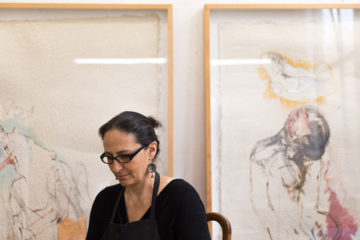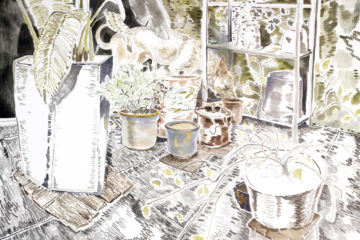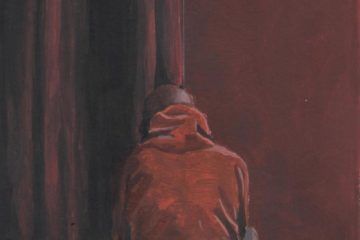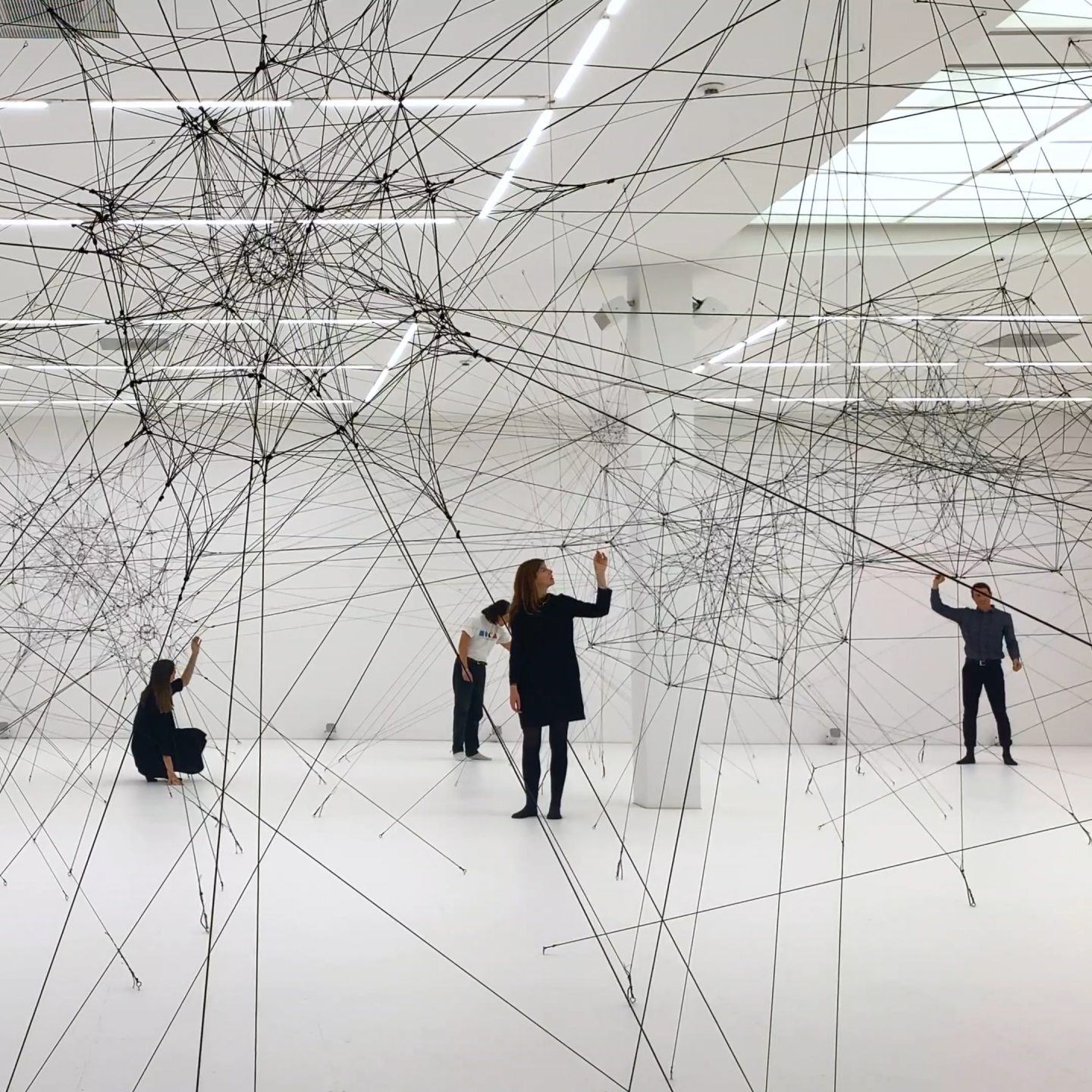
In Conversation With Tomás Saraceno, The Artist Who Wants Us To Enter A Non-Human World Of Vibration
- Name
- Studio Tomás Saraceno
- Project
- Algo-r(h)i(y)thms
- Images
- NIK Schulte
- Words
- Devid Gualandris
The moment you step into ‘Algo-r(h)i(y)thms’, Tomás Saraceno’s current exhibition at the Esther Schipper gallery in Berlin, expect a thrill for your senses. “It is a show to see, to touch, to play, to hear, to feel,” the Berlin-based artist tells us, as we stroll around an impressive web-like landscape of nets.
Saraceno has made himself into a major player in the art market, blessing the general public with his insatiable curiosity, playful larger-than-life installations and visually-stunning ecological experiments for the past two decades. His new show in Berlin, ‘Algo-r(h)i(y)thms’, documents the unseen, the imperceptible, and the inaudible, hinting to a new understanding of the future through vibrations, spiders, and cosmic webs. Listening to his thoughts about different and distant realities was an exceptional and intriguing experience.
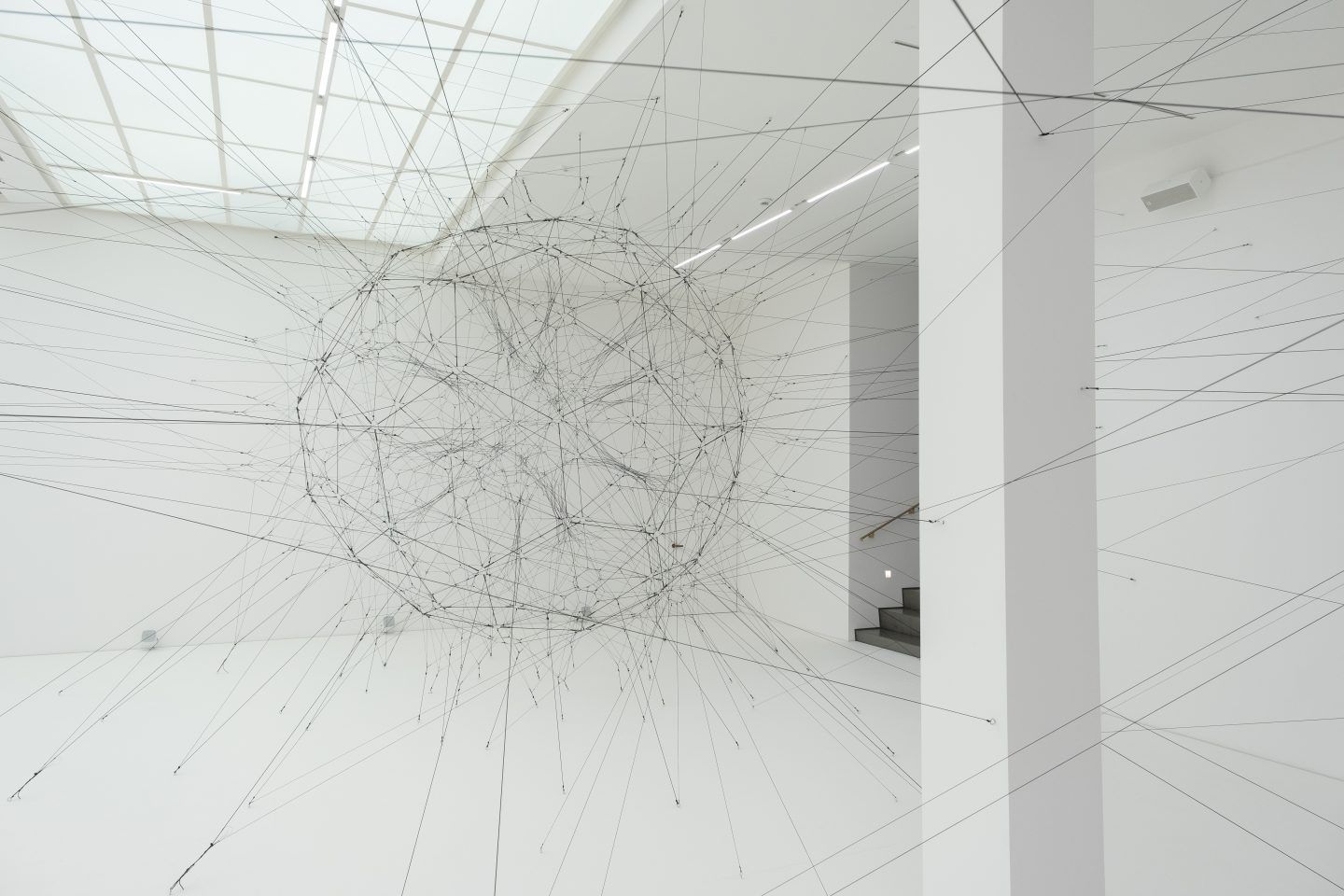
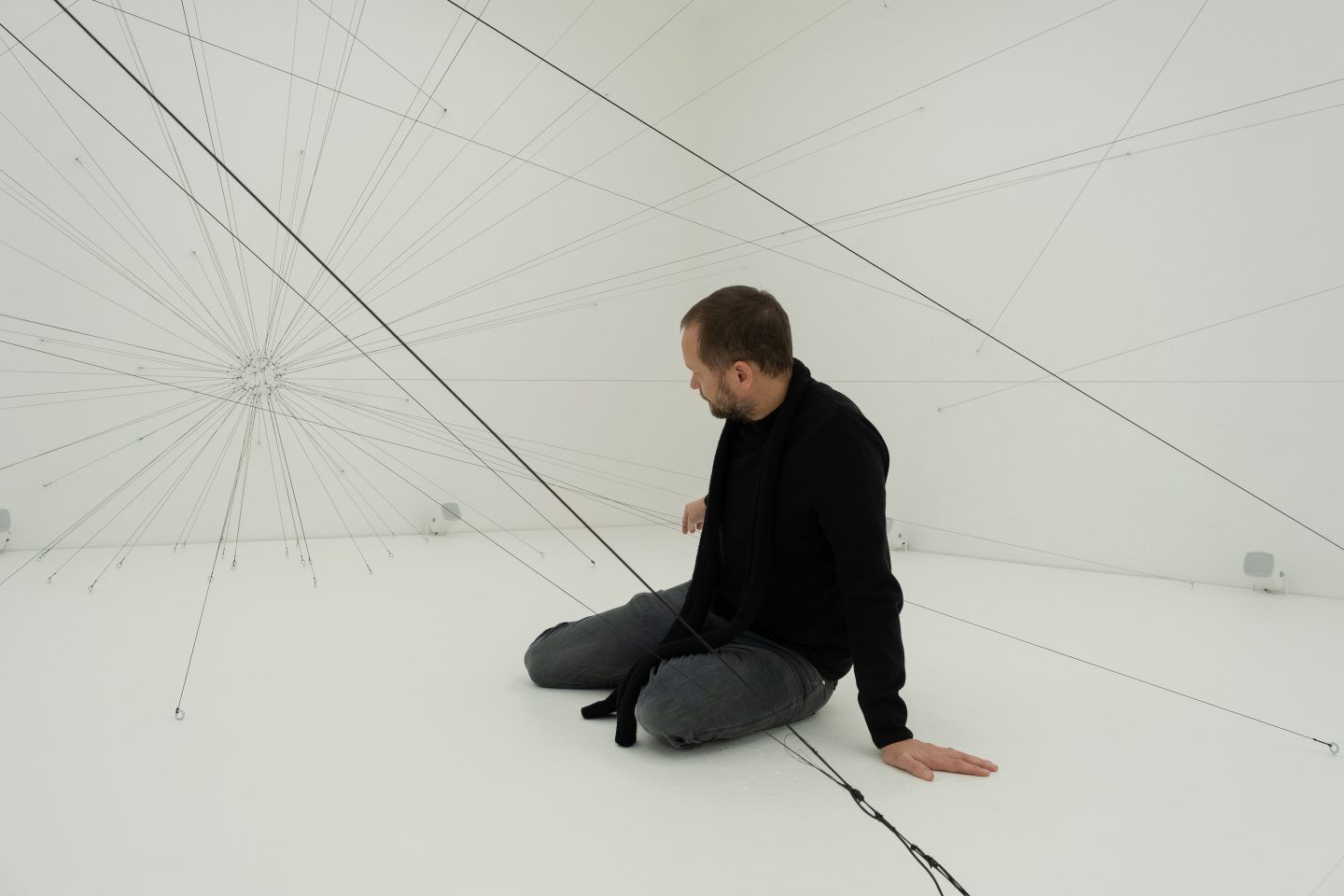
We meet the artist just before the excitement picks up at Esther Schipper during opening night. Every artist is distinctive, Saraceno is especially so. There is something reserved about him; his laugh is precise, his body controlled. When asked about his origins, he says firmly, “I’m from planet Earth. We all are.” His answer is fascinating, but leaves us feeling only further curious. Saraceno was born in Argentina and trained as an architect in Buenos Aires, spending the last decade and a half living in Germany—finding his way to art at the Städelschule in Frankfurt. While still fond of the Hesse city, home for Saraceno is now Berlin, where his studio has existed since 2012. “It was my artist friend Olafur Eliasson who invited me to relocate my studio to Berlin. I like it here. The city has a unique character, an energy fundamentally different from the likes of Paris or London. I wouldn’t live anywhere else,” he confides.
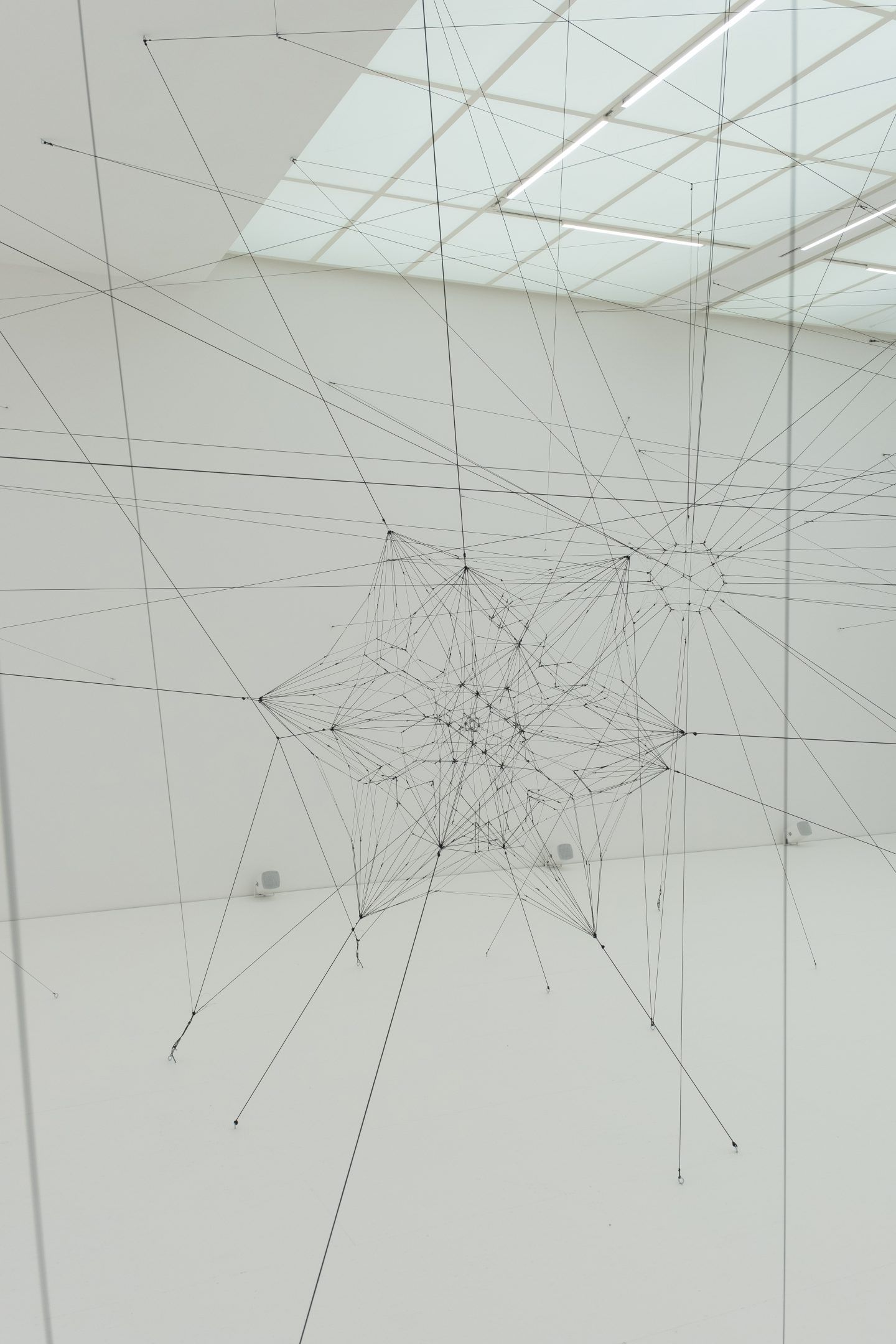
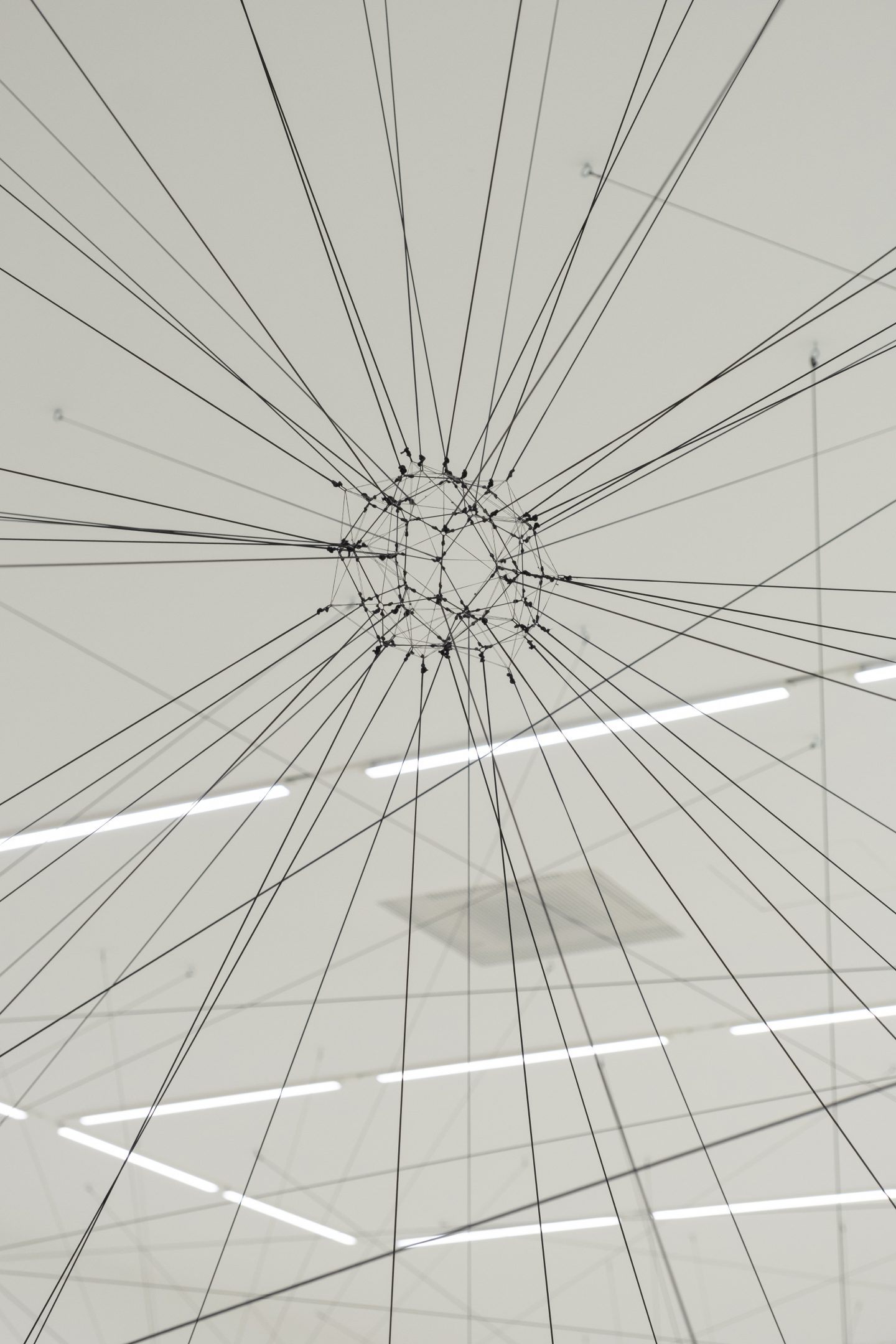
As we walk through the exhibition, the conversation is driven towards his comfort zone: his work. Our chat circles around many concepts not known to most—rhythmic attunement, vibrational rates, nested ecologies—as Saraceno detours breathlessly from one topic to another. His third solo exhibition at Esther Schipper gallery is a sonified intervention addressing the problems and challenges of forming livable communities. The show is guaranteed to give visitors a captivating experience, marrying adventure with meditation seamlessly. Beyond its architectural sublimity, it operates more metaphorically. When questioned about this, Saraceno shows a compelling enthusiasm: “I am asking people to embrace ‘responsibility’ as a two word concept, ‘response’ and ‘ability’, the ability to respond to something.” Visitors are invited to play the complex web of strings as a spider might and be responsible for each cord they touch and for each signal that is sent to the larger clusters. It sounds simple, but it is anything but.
“I am asking people to embrace 'responsibility' as a two word concept, 'response' and 'ability'”
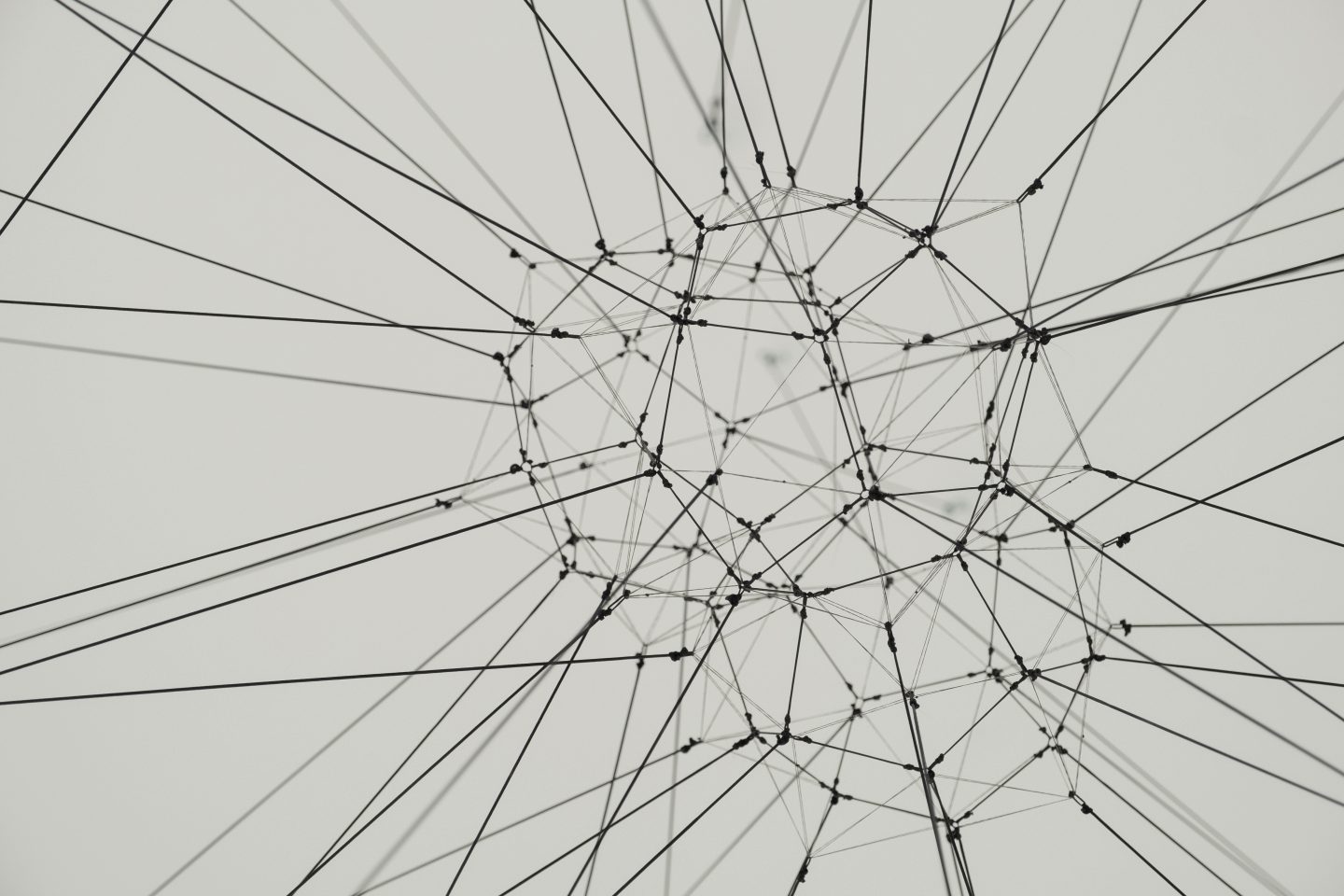
‘Algo-r(h)i(y)thms’ is a practice of rhythmic attunement to a non-human world, “an exercise in establishing a communication with something that is distant, inaudible, but which we are a part of,” Saraceno shares. He calls it a “non-verbal dialogue, a jamming session”, in which visitors are invited to improvise a composition and become part of something they would usually not engage with; “to expand and extend precisely that, their ‘response-ability’.” The exhibition is meant to be an immersive experience, to be watched, heard, sensed, and perceived. Saraceno explains us the role of the crowd in his project: “We need to discover the links between realities, we need to observe, to compose, to build, to attune. I’m curious about the different levels of engagement and how the sound is going to reverberate through the room and, hopefully, create a dialogue.”
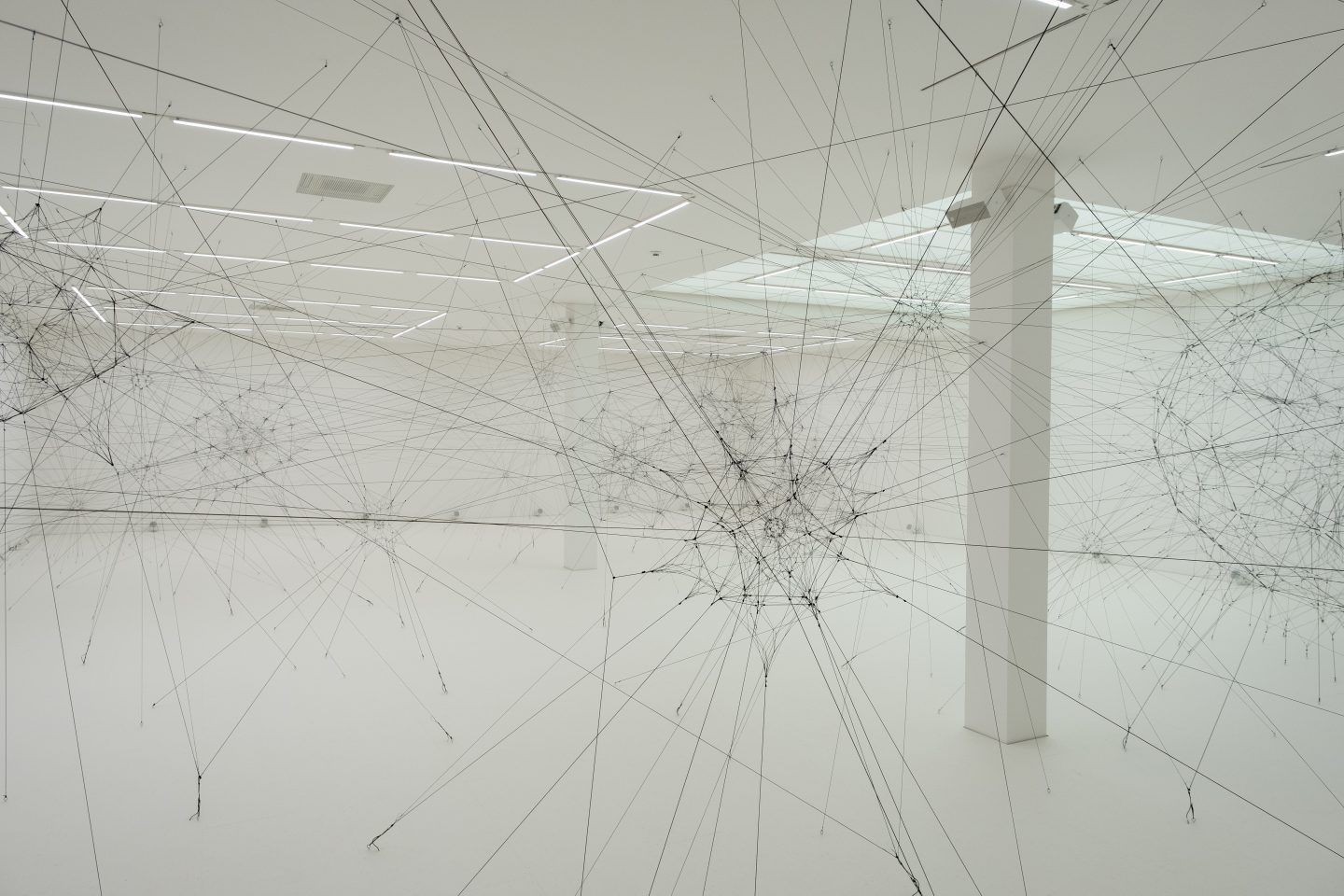
Spiders are an enduring motif in Saraceno’s work. “I’m interested in their rhythms of vibration, in their scores of attunement. Spiders are essentially blind, at least according to human standards. This, however, does not stop them to create an image of the world through the tremors they send and receive through their webs,” he remarks. A spider-web is more than a specialized instrument for transmitting seismic signals, it is “an extension of the spider’s body, it is the embodied cognition of its mind. Through it, spiders can orient themselves and communicate with other species.” The artist tells us he has always been fascinated by the structure and metaphoric beauty of spider-webs: “The interest was always there, I just had to be patient to see where it would lead me. I started to see the web as a molecule, then became interested in the work that goes into making it, and eventually expanded it further, as a study of galaxies, of cosmic dust, of intercommunication,” he explains. Although his interest in and research of spiders is ever-shifting, ‘entanglement’ remains the challenge that inspires him throughout his work, and life. “As a kid, I had nightmares about not being able to disentangle things, about the existence of too many connections,” he confesses. We are left to wonder if this has changed.
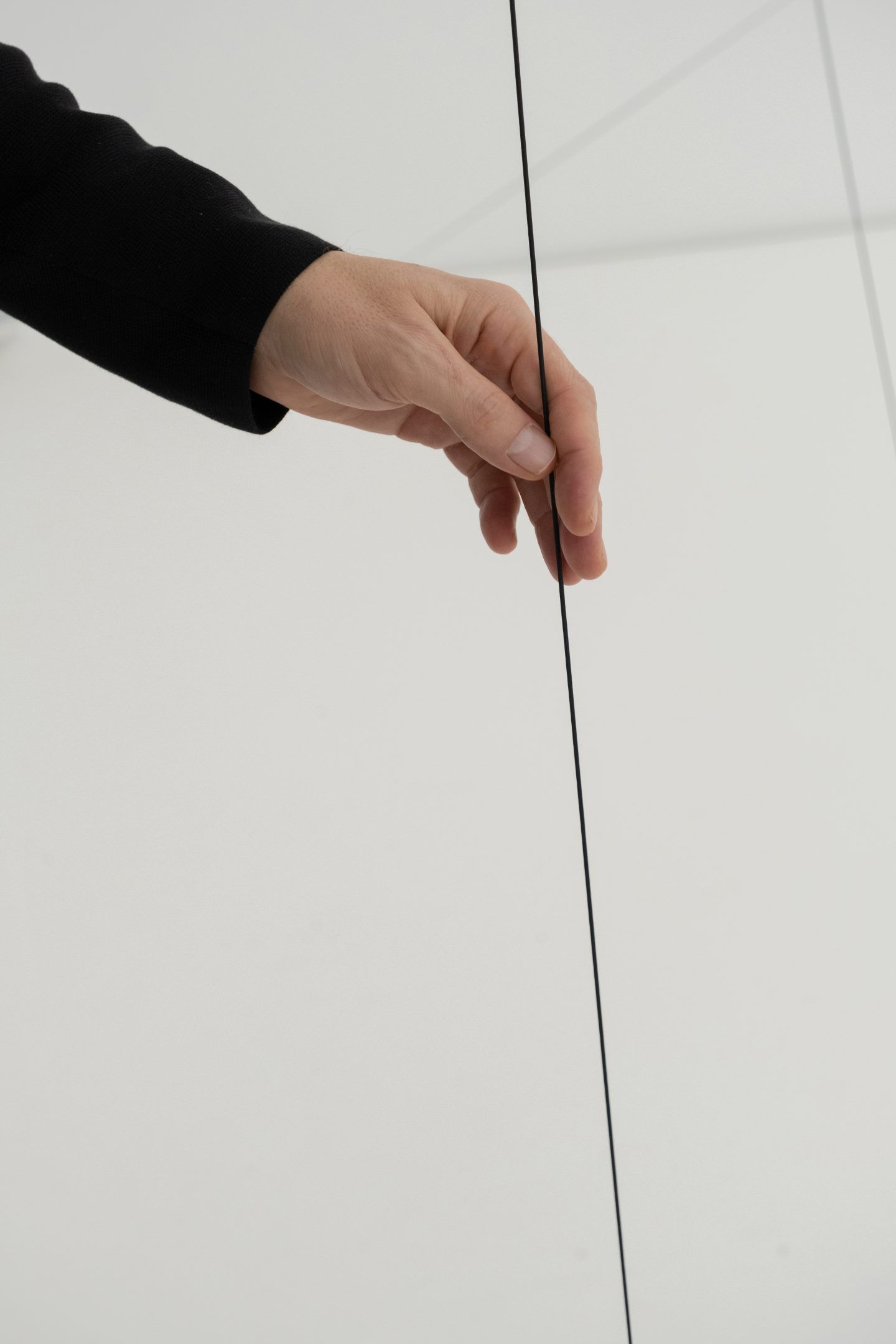
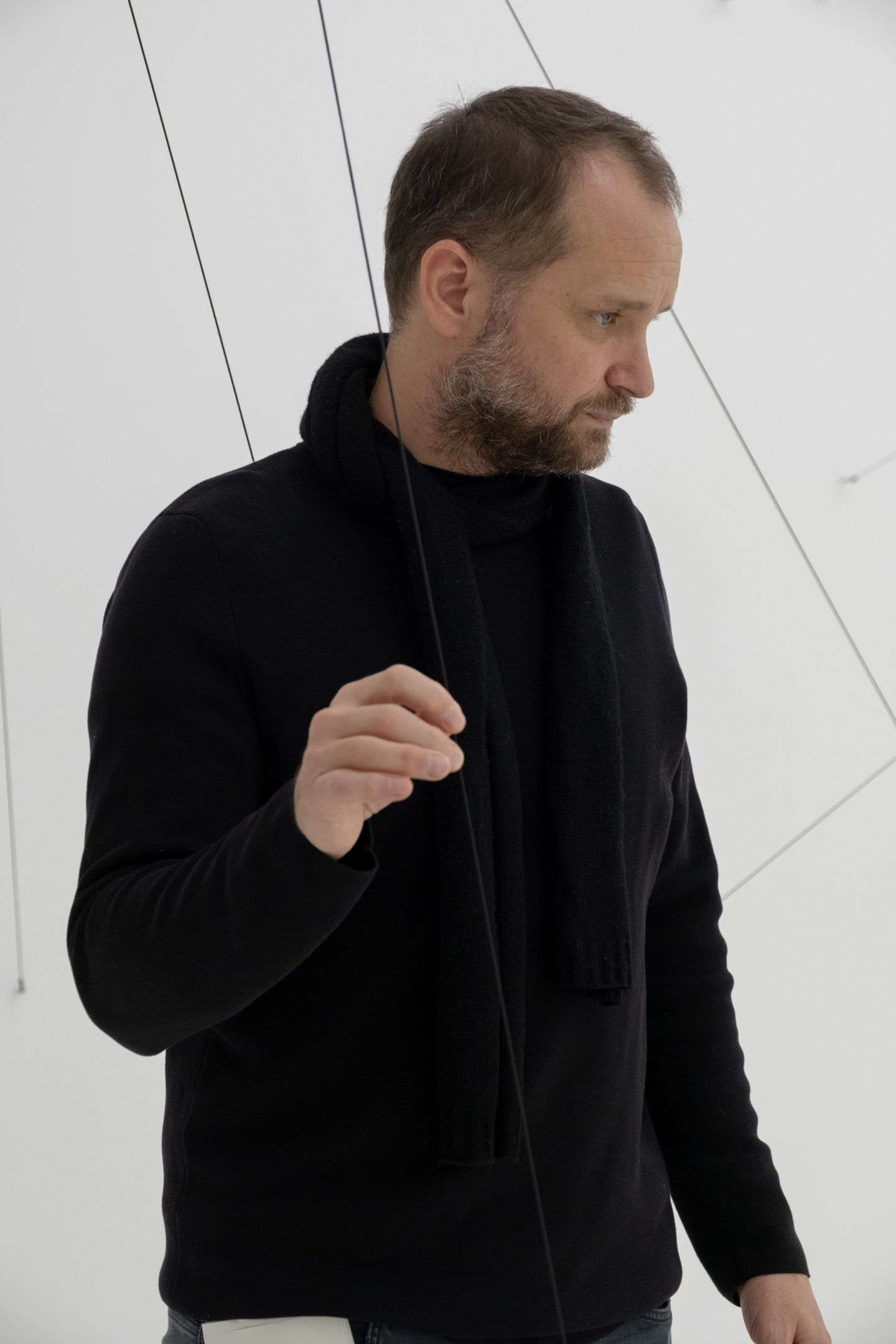
”The exhibition is an entry into a non-human world of vibration, an invitation to play one rhythm or another and feel their interconnections”
Saraceno has clearly learnt a lot from spiders; his knowledge is boundless. “Spiders’ acoustic techniques and sonic scores for attuning to the rhythm of their webs include plucking, tapping, stridulation, tremulation, plucking. There are territorial rhythms, edible rhythms, courtship songs, mimicking signals,” he reports with an encyclopedic ease. As our minds elaborate the information received, he can sense we are mesmerized, leaning forward and inviting us to touch the strings first-hand. He demonstrates how to carefully enact those hard-to-gasp techniques—some acoustically more pleasant than others—before inviting us to play the cords simultaneously. “The exhibition is an entry into a non-human world of vibration, an invitation to play one rhythm or another and feel their interconnections. When multiple people engage with the strings, they learn to listen to each others’ sounds and adjust their response accordingly. It creates harmony. Listening is fundamental,” he explains. His words are affecting, and as a result, they rearticulate a deeper level of engagement with his artworks.
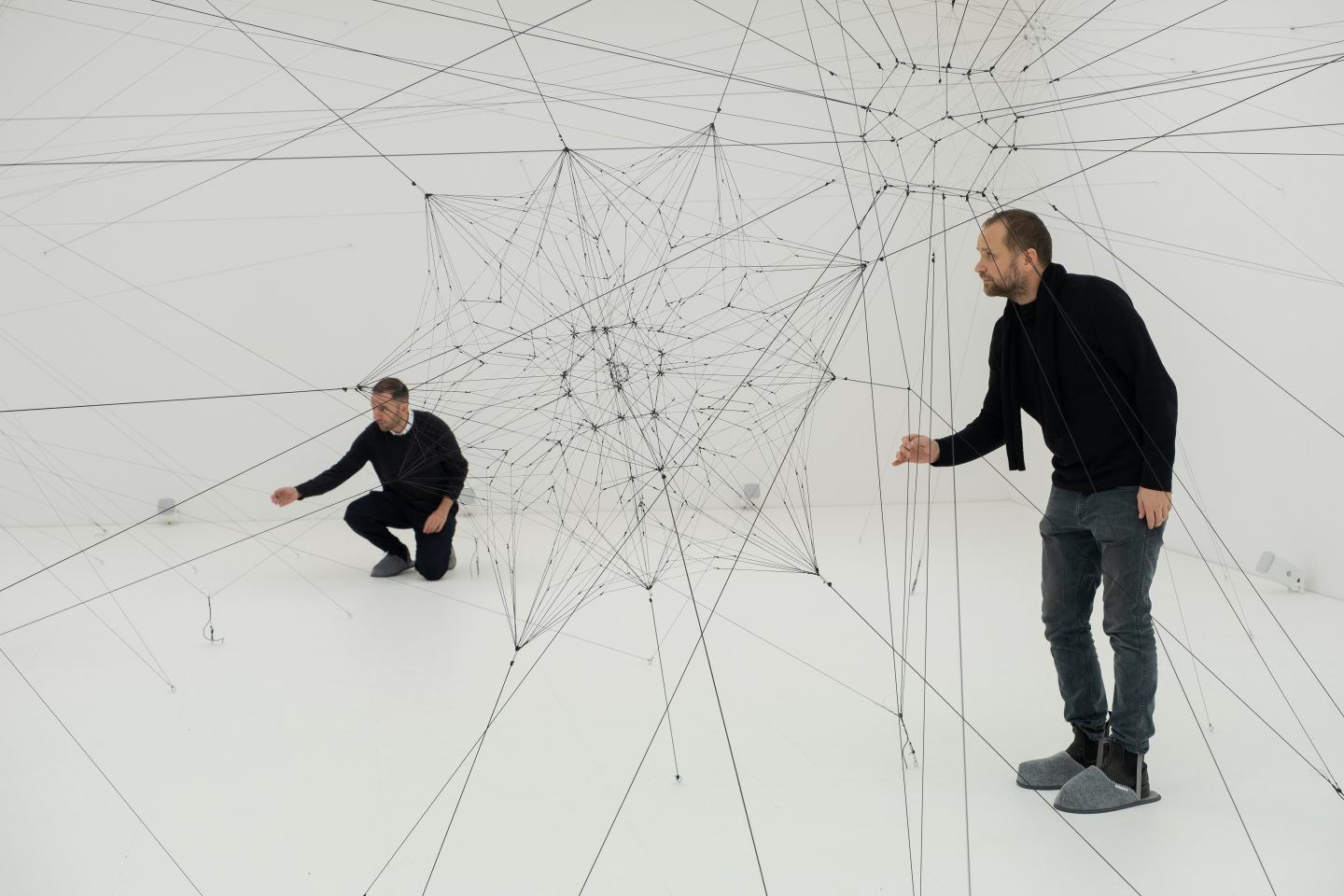
Through his work and research, Saraceno probes our place in the world and our relationship with nature and humanity. When asked how his artistic approach is translated into new ways of thinking about the planet, Saraceno explains that the 3.4 kilometers of 1-2.5 millimeter black cord, carefully arranged in complex clusters, are meant to be “invisible connections, reminiscent of ecosystems; each ecology is linked to others in complex ways.” ‘Algo-r(h)i(y)thms’ highlights precisely that, our interconnectedness with other beings, the radical reciprocity of all things, suggesting ways of cooperating across species’ boundaries, towards a thriving, shared future. The artist gets as excited talking about spiders as he does breaking down the motivations of his work: “I don’t know if art can change the world, but I know that its perception can be a part of the project of safeguarding our planet. Art can become something else, form new alliances, new forms of interactions that may disrupt the system, urge a change.” His ecological commitment is undeniably admirable, and is what makes him so well-respected in the art community.
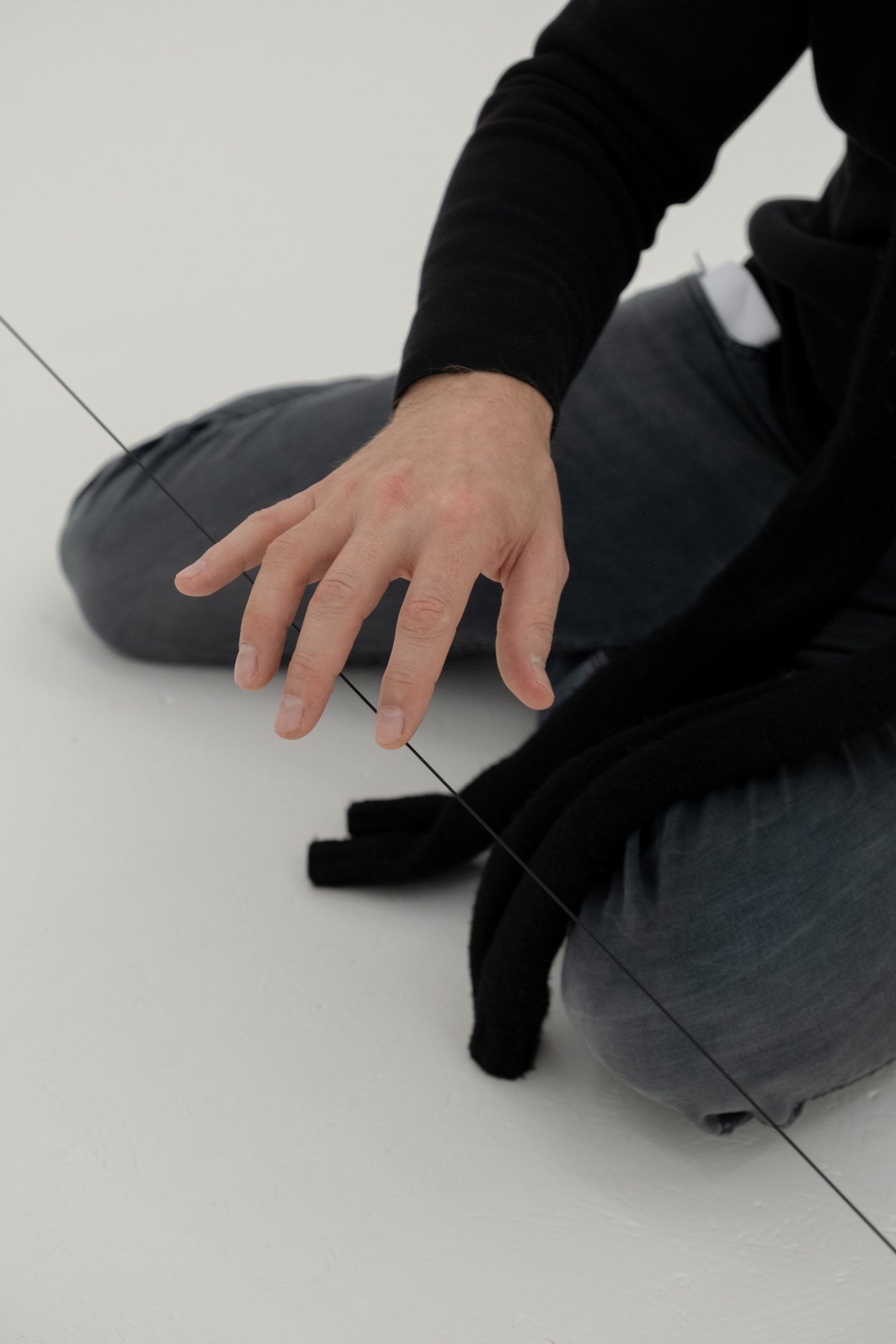
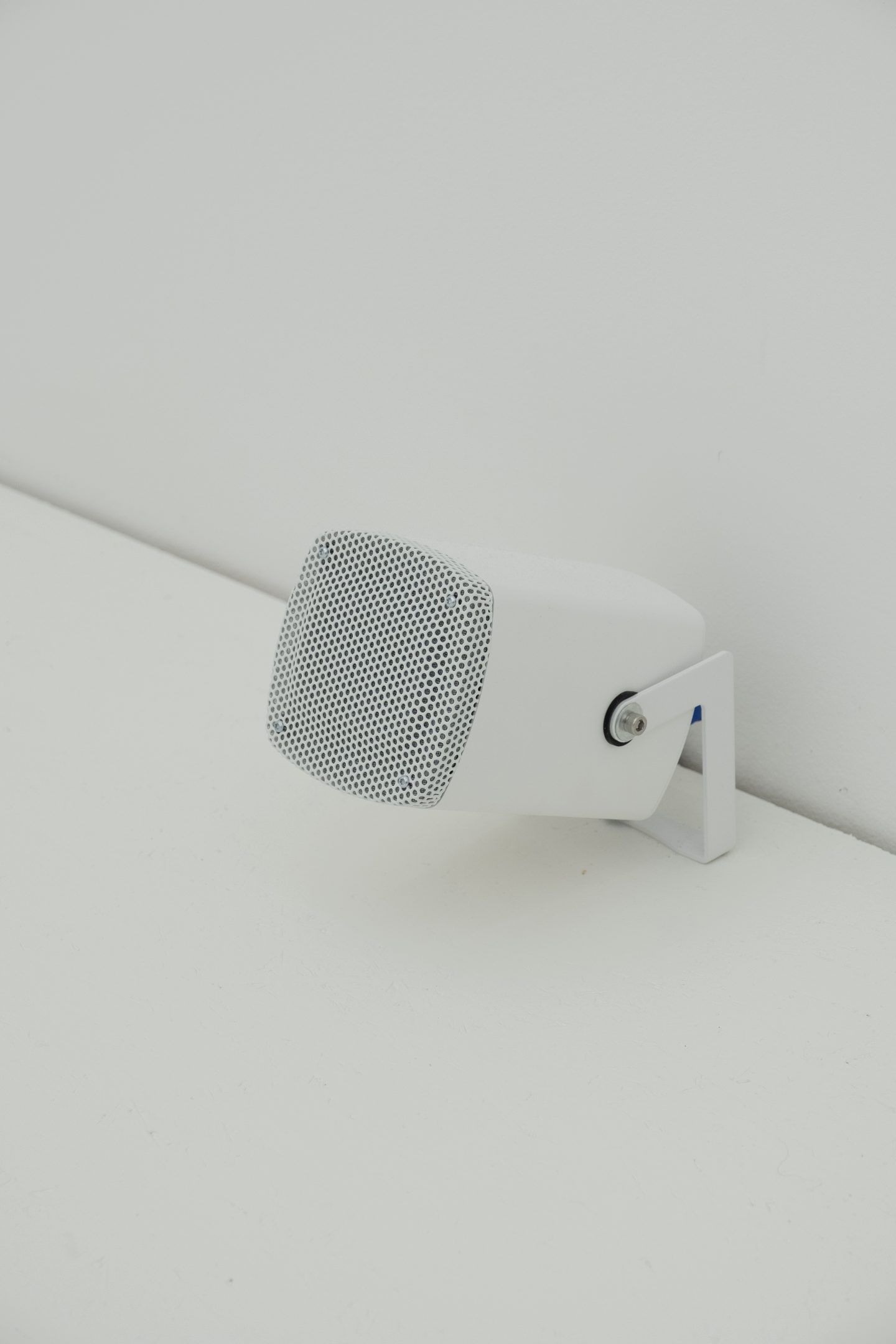
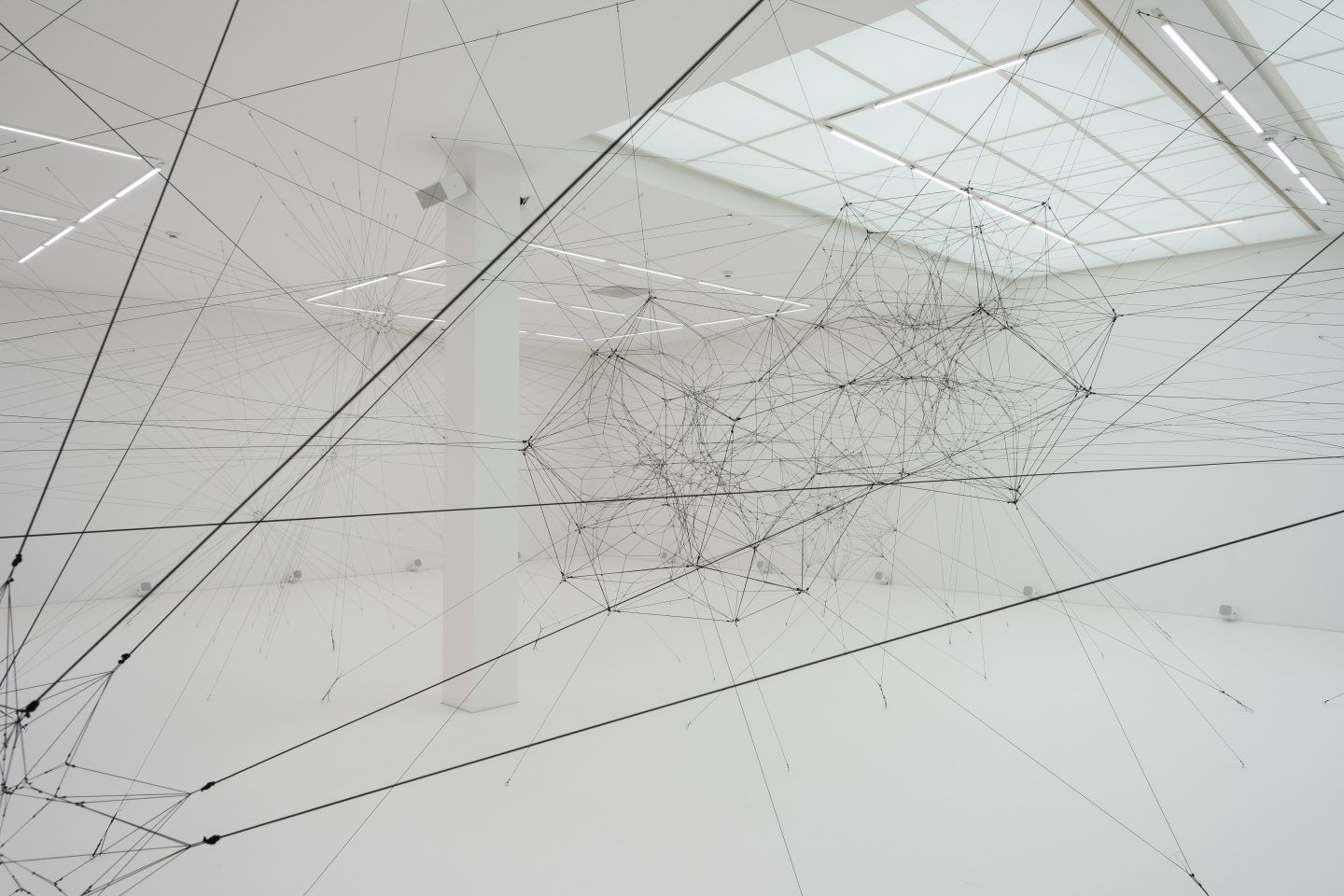
Saraceno wants us to look at humanity’s presence with new eyes. “We have lost understanding of the importance of our surroundings. We have to rethink the world. Together,” he announces in a messianic tone. According to him, dialogue and collaborative participation can lead us towards a greater ecological sensitivity. “As spiders tell us, we are all connected through an apparatus we do not understand. Everything is entangled in an ecosystem. People should pay more attention to sense and listen to other voices,” he shares. Saraceno’s work is not meant to offer a solution, rather, “it’s about improvement, about awakening people about the consequences of their way of engaging with the planet,” he says. When asked about his role as a successful artist in debates about an ecological future, he answers that “we are all responsible; we can either watch or act. As an artist, I’m just trying to do artistic practice in an ecological way, conscious of all ecologies.” He begins to grin as he adds, “I always say that a spider looked down at me and told me, ‘You stupid human, do something’”. This leads to a discussion about indigenous communities, shamans, and mass extinctions. “Humans have decoupled from other species; we have lost the ability to understand nature and animals, fearing them instead. The exhibition can be seen as a metaphorical microphone; it gives spiders and communities more attuned to the rhythms of nature, more sensitive to rituals, a voice,” he explains. When asked about what the voice would say, “the future is in danger,” Saraceno says declaratively.
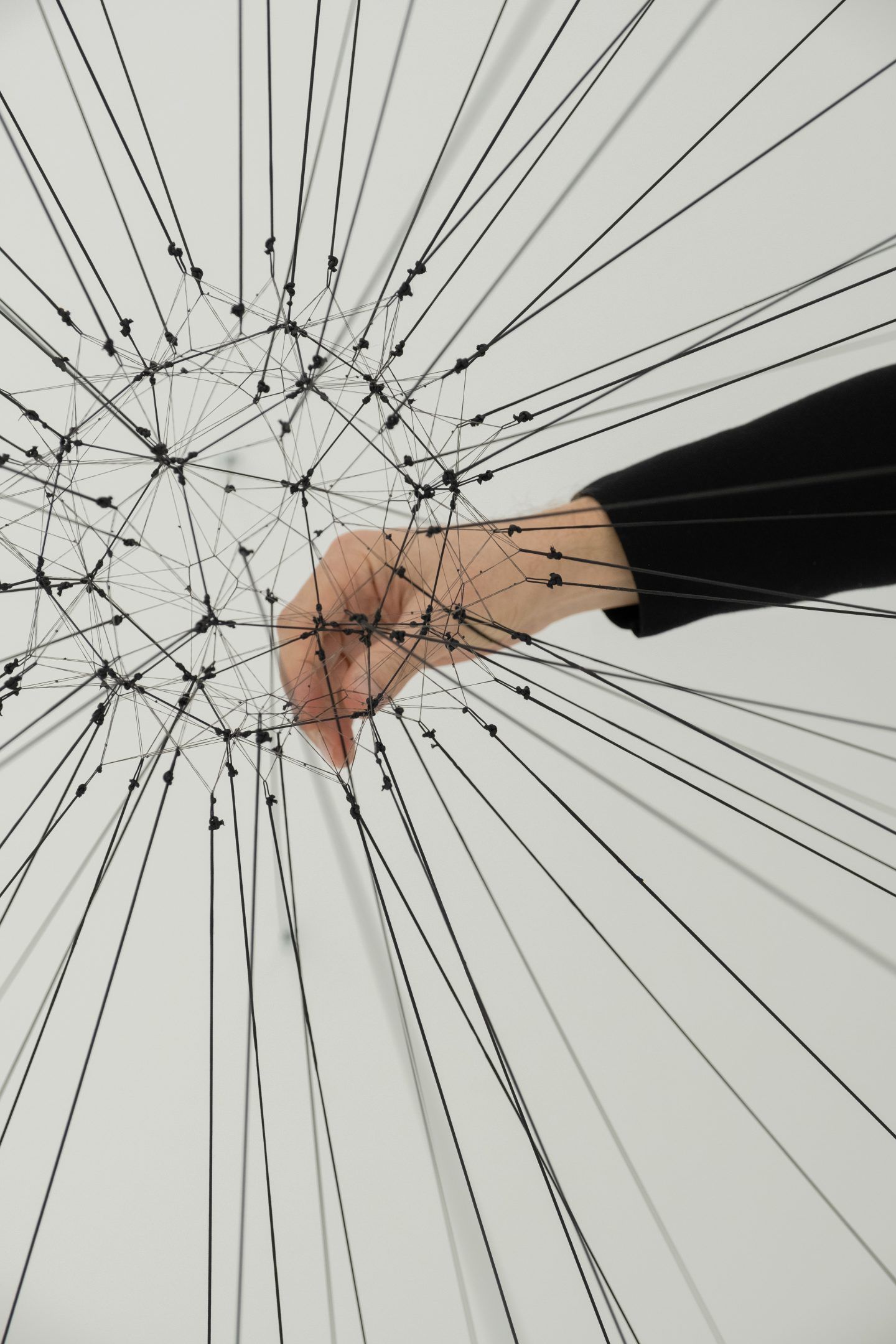
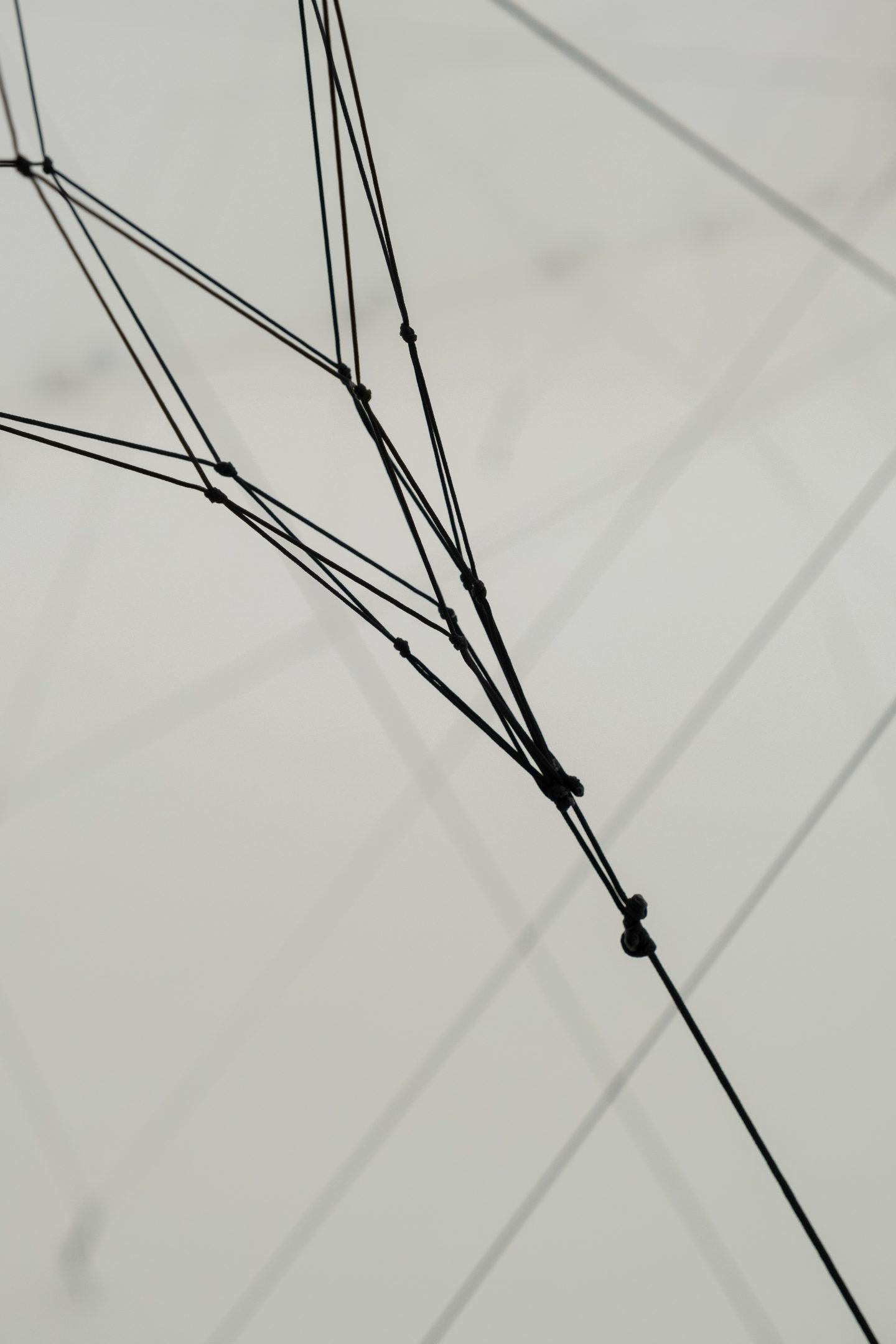
The tour has come to an end. What response is Saraceno hoping to get from the show? “It all goes back to ‘response-ability’,” he says, “I hope that people see their capacity within their sphere of interaction, to respond to larger ecosystems, to feel and be a part of them. To listen, adjust to and change the rhythms of our planet, of other species, of other people living in it.” Saraceno leaves us not only with a great lesson but with some specific advice: “A good way to hear others is to close your eyes. By neglecting sight, your brain switches; you start to perceive something you didn’t hear before. Try it, sometimes.” Saraceno is now out of sight, but his hope for a better future remains within the walls and knots of the show, for all to experience and learn from. ‘Algo-r(h)i(y)thms’ is on view at Esther Schipper Gallery from November 16 through December 21, 2019.
ADDRESS
Esther Schipper
Potsdamer Strasse 81E
10785 Berlin
OPENING HOURS
Tue-Sat: 11.00-18.00
All images and videos © NIK Schulte for IGNANT production


